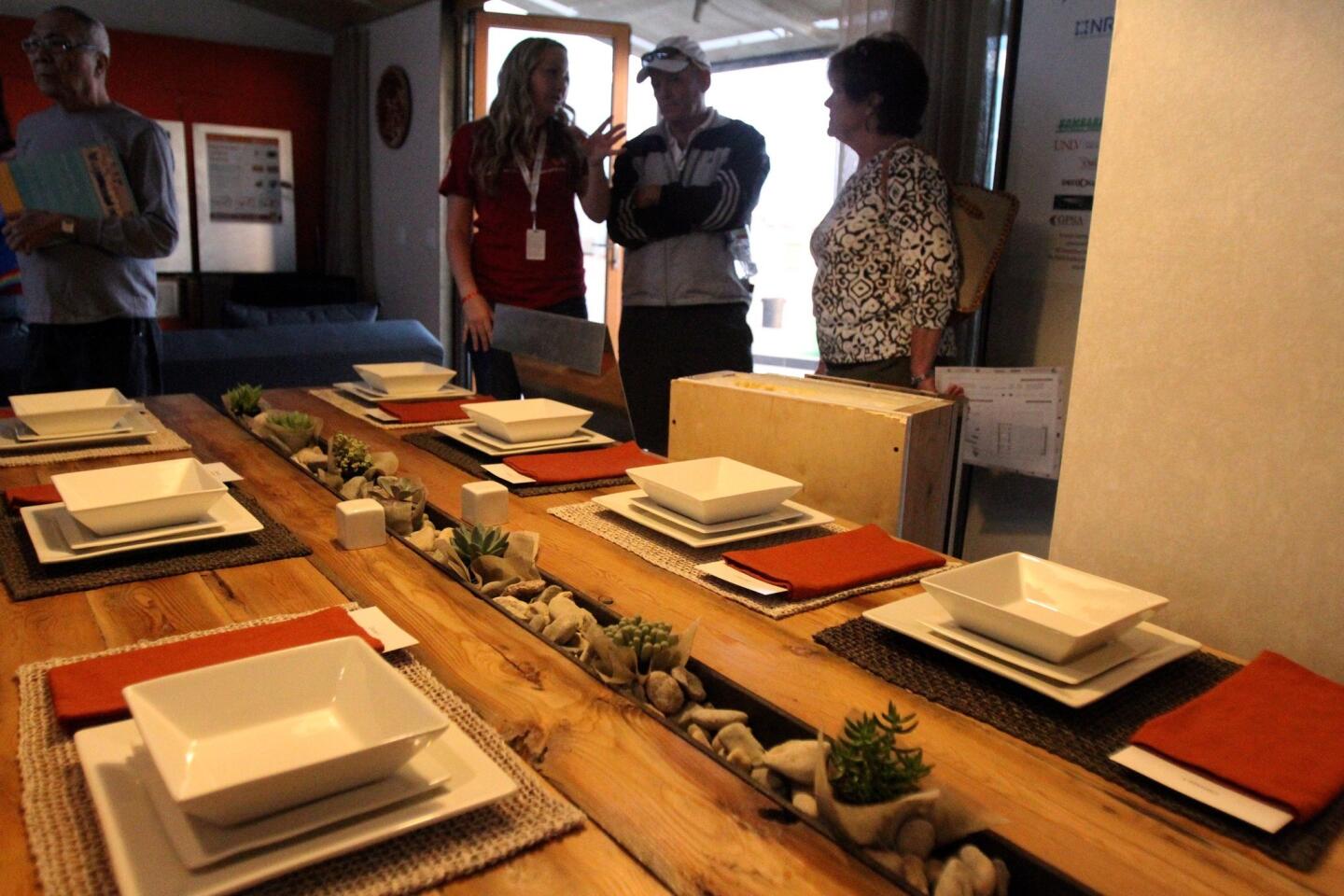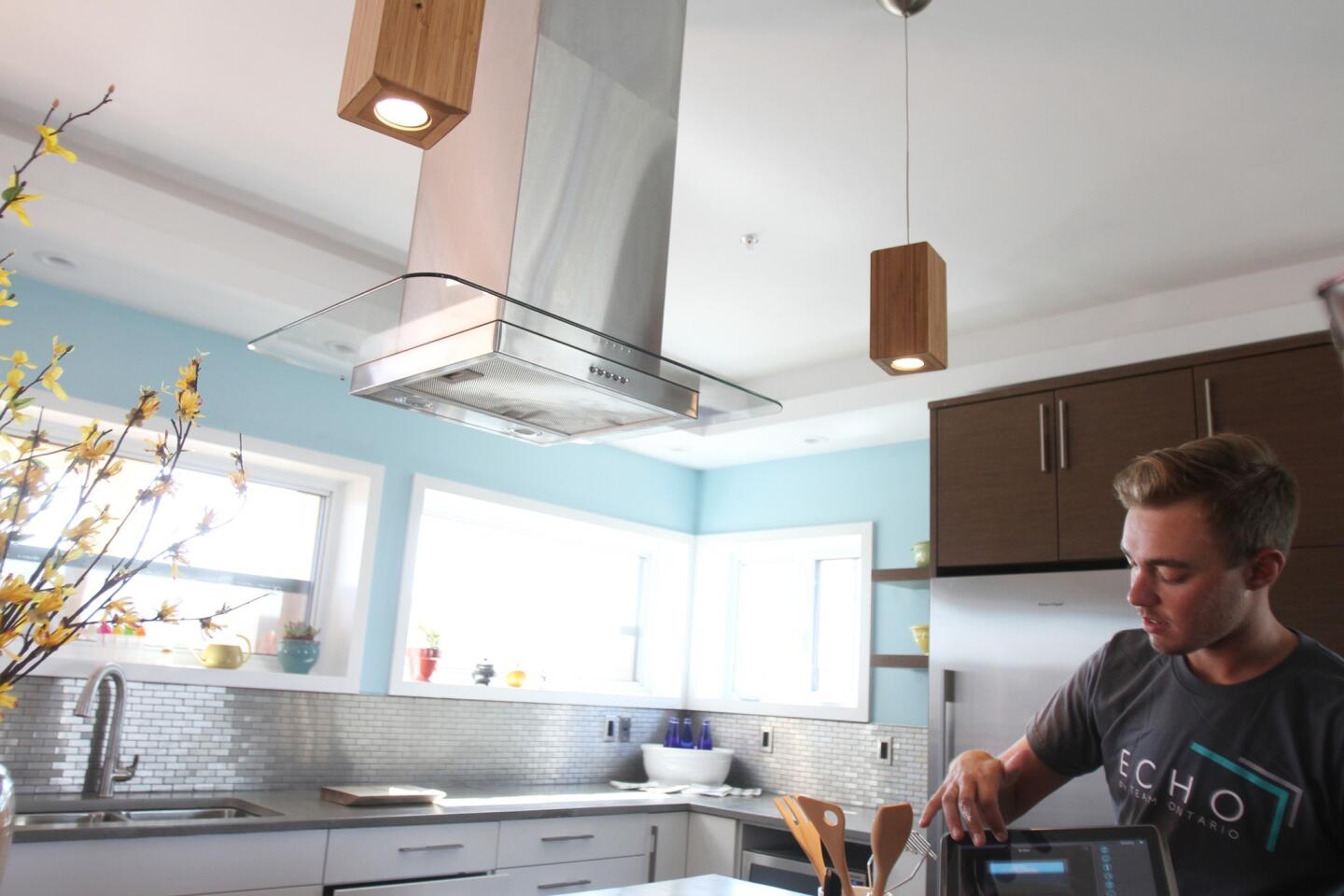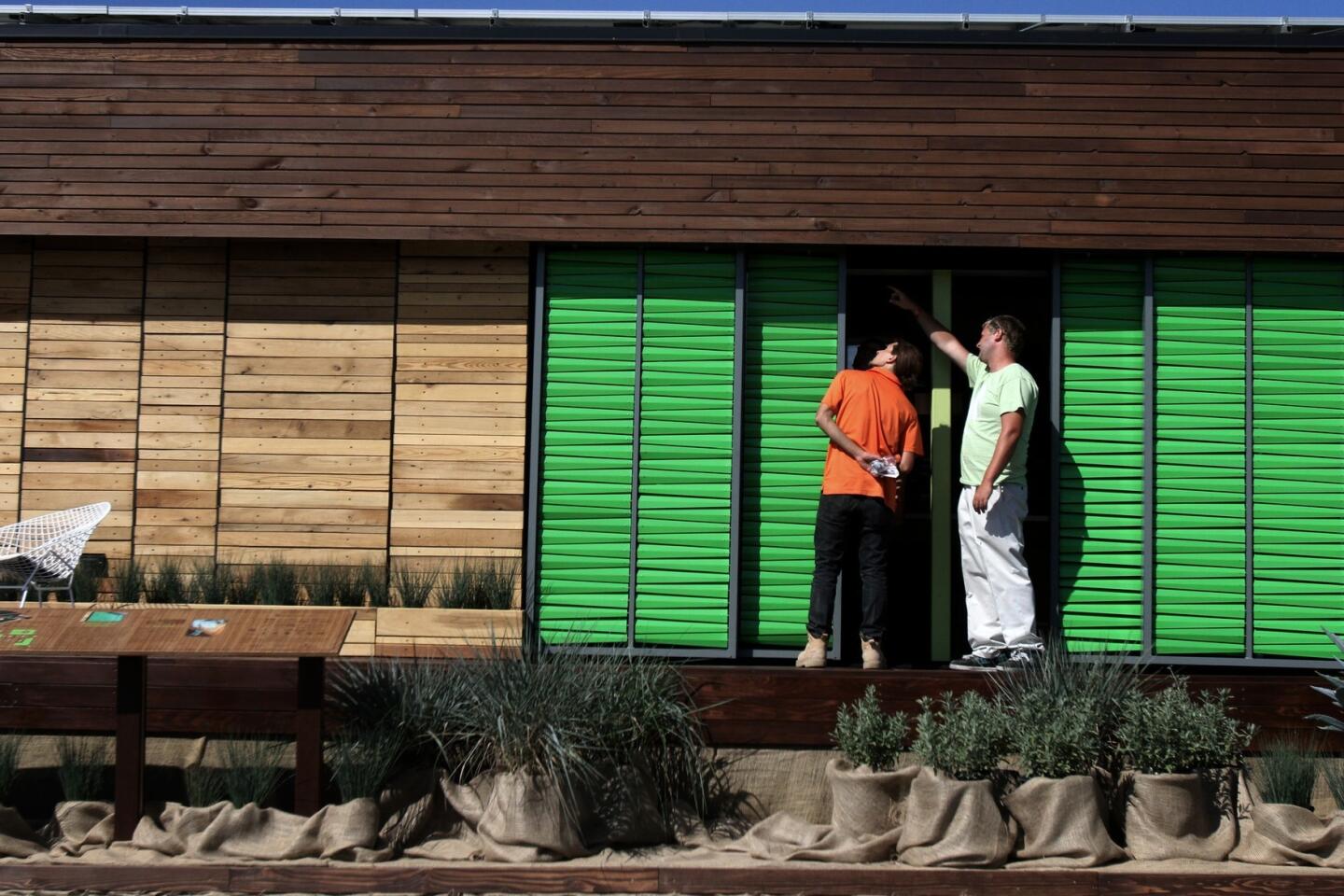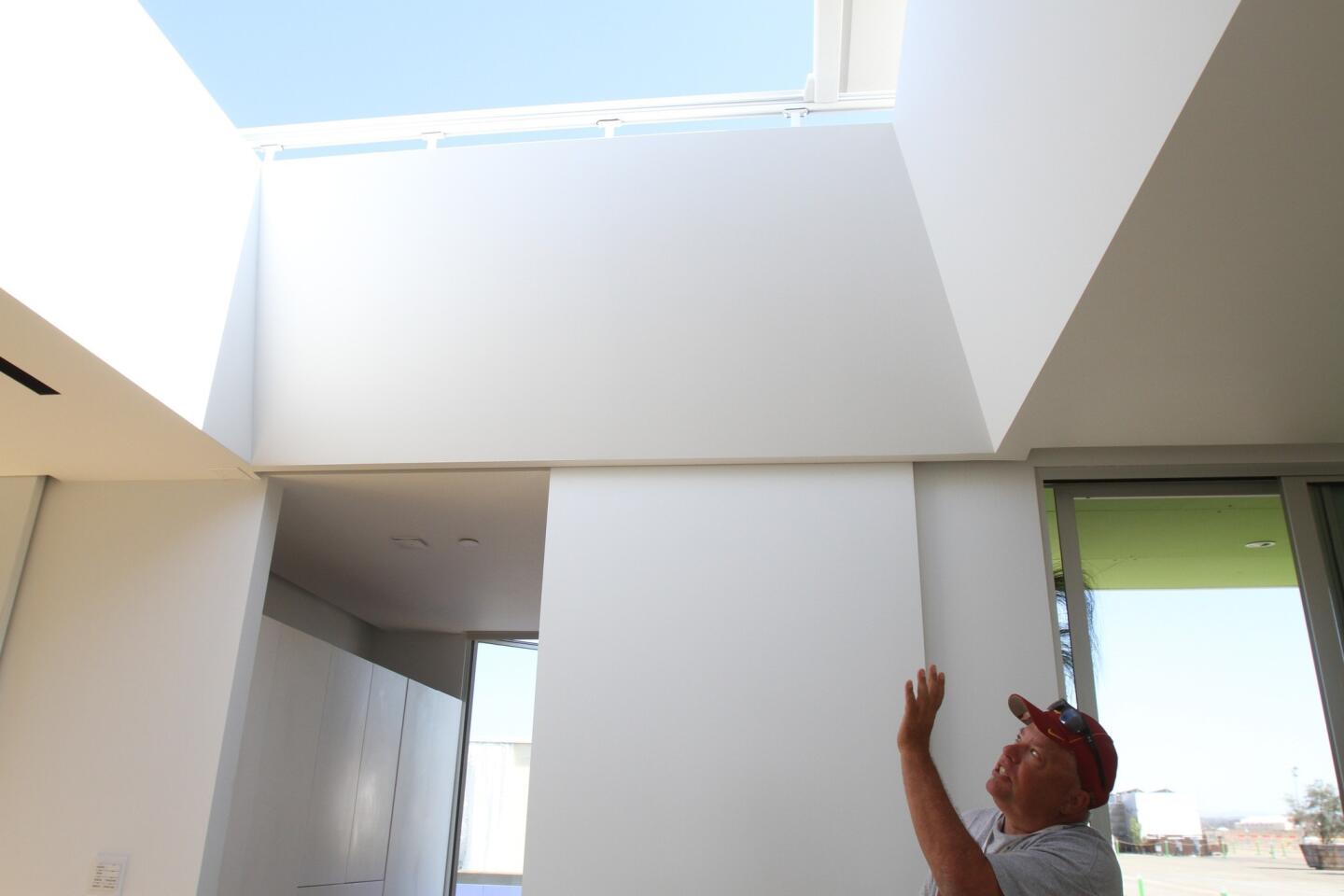Solar Decathlon in Irvine: Sunny, with a 100% chance of participation
- Share via
Past the neatly coordinated neighborhoods, the master-planned homes and immaculate lawns, on an old military runway in Irvine, a community that imagines life on a smaller scale has taken root.
There, hundreds of college students from across the U.S., Canada and Europe have designed and built 19 solar-powered homes in a unique competition to see which will emerge as the most cost-effective, energy-efficient and attractive.
Sponsored by the Department of Energy, the Solar Decathlon is a rigorous competition — the rule book is 68 pages long and regulates everything from acceptable average interior temperature (71 to 76 degrees Fahrenheit) to affordability (ideally below $250,000) to the brightness setting on a TV during a scheduled movie night.
None of the homes is larger than 1,000 square feet, and each must produce at least as much energy as it consumes during the judging period.
“Everyone wants the American dream, the white picket fence with the large home. But I think we’re slowly pushing away from that,” said Justin Kang, who graduated this year with a master’s in architecture and is project manager for Team USC. “I think eventually we’ll push toward a solar-driven community and solar-powered homes.”
Each of the 19 teams has prepared for years. After months spent designing and securing funding, they began construction earlier this year on their home campuses. Each house was then taken apart and shipped to be reconstructed at the Orange County Great Park.
For the past two weeks, each team has been judged on how its house would function in real life. Many of the structures will then return home to be displayed and used for research or as housing. One will house a wounded veteran near San Diego.
During judging, teams must do a host of real-world activities, including drawing hot water, regulating humidity and showing that energy-saving appliances don’t just work, but work well.
To top it off, they are subjected to the ultimate test for any homeowner: the dinner party.
On a recent evening, after a long day that began with some teams putting finishing touches on their homes, each household prepared the first of two required dinners. Low music played in the background as mandated by judges, who roamed house to house ensuring that every rule was properly followed.
Inside one cozy-looking house with a log-cabin facade, two computer engineering majors from Team West Virginia readied an Italian meal of caprese salad, artichokes, chicken Parmesan and cannoli.
In two hours they would host six opposing team members who would judge the experience based on the quality of the food, ambience and overall experience. Guests were encouraged to deduct points if too much or too little food was prepared, or if the meal didn’t exactly reflect what the team promised on a restaurant-style menu.
Bryant Donato, a computer engineering major from West Virginia University, had volunteered to cook because of his previous experience managing a pizzeria. He fumbled with an artichoke.
“I don’t know what to do with this,” he said. “I need a sous chef. That’s what I need.”
Outside, two students adjusted a rail so it would be exactly 1.5 inches from a walkway fence, as required under the competition’s rules.
John Wray, a landscape architecture major, and Colby Davis, a senior majoring in electrical engineering, spent their summer on campus, building the house with about 20 others who make up West Virginia’s team. It’s meant to mimic the feel of a traditional Appalachian home. At its center is a solar chimney that provides ventilation.
The competition, said Wray, “is our life.... Everything you see was put together by us students.”
“It’s our hands; it’s our sweat and blood,” said project lead Branden Bellanca.
A few houses down the runway, in a sleek one-bedroom home surrounded by an ethereal white curtain made of recycled polyester, three architecture graduate students from Team Austria made apple strudel, baked chicken breast in a pumpkin seed coating and pumpkin cream soup drizzled with pumpkin seed oil.
Each of these homes has a story. One team constructed its house for an older retired couple ready to live away from the city. Another pictured families rebuilding in the wake of a natural disaster.
Team Austria imagined it was building for a young couple without children, so the space is intimate. The bedroom is just big enough for a large bed. A main room without dividing walls houses the kitchen, dining room and a living area. A long wooden dining table doubles as a work space.
Among its signature features are front and back sliding doors that open onto large patios, an outdoor herb garden that draws its water from a rainwater reservoir, and storage built into the walls.
Two team members who had been standing on the patio walked inside, trying to make the temperature exactly right.
“Every person produces about 100 watts of heat energy,” noted Marcus Jones, a doctoral student in building efficiency at Vienna University of Technology.
At 9 p.m., dinner was served. Throughout the makeshift neighborhood, competing team members sat at long rectangular tables trading tips and stories about construction materials and design software.
The glow of energy-efficient light illuminated the runway.
“We all know the stresses and the hardships we endured to get here,” said Kang, the Team USC project lead. “It has been very exhausting, very tiring, but I think it’s well worth it.”
Esquivel writes for the Los Angeles Times.



